Soil erosion is a significant environmental issue that affects both agricultural and forestry sectors. It is the process by which soil particles are detached, transported, and deposited elsewhere due to various natural and human-induced factors such as wind, water, deforestation, and improper land management practices. The consequences of soil erosion include decreased soil fertility, reduced crop yields, increased sedimentation in rivers and lakes, and degradation of ecosystem services. To address this pressing concern, innovative approaches such as green loans have emerged to promote sustainable soil management practices in agriculture and forestry.
For instance, imagine a hypothetical case study where a farmer in a rural community experiences severe soil erosion on their farmland due to heavy rainfall events. This leads to substantial loss of topsoil layers containing essential nutrients necessary for plant growth. As traditional farming practices fail to mitigate the problem effectively, the farmer decides to explore alternative solutions. In collaboration with local financial institutions offering green loans specifically designed for eco-friendly initiatives like soil conservation measures, the farmer invests in contour plowing techniques and terracing systems. These interventions help prevent further erosion by reducing surface runoff velocity and promoting water infiltration into the soil profile.
The role of green loans in mitigating soil erosion cannot be understated. By providing accessible financing options at lower interest rates or with favorable terms, green loans incentivize farmers and landowners to implement sustainable soil management practices. This financial support enables them to invest in erosion control measures such as conservation tillage, agroforestry, cover cropping, and reforestation.
The availability of green loans encourages a shift towards more environmentally friendly farming and forestry practices. Farmers can adopt techniques that help retain soil moisture, reduce erosion risks, enhance organic matter content, and improve overall soil health. By implementing these measures, the risk of soil erosion is significantly reduced, leading to improved crop yields and long-term sustainability.
Furthermore, green loans also promote knowledge sharing and capacity building within rural communities. Financial institutions offering these loans often collaborate with agricultural experts and organizations to provide training programs on sustainable land management practices. This holistic approach ensures that borrowers have access to the necessary information and expertise needed to implement effective erosion control strategies.
In summary, green loans play a crucial role in mitigating soil erosion by providing financial resources for farmers and landowners to invest in sustainable soil management practices. These loans not only address the immediate problem but also contribute to long-term environmental sustainability in agriculture and forestry sectors.
The Importance of Soil Conservation
Soil erosion is a significant issue affecting both agriculture and forestry, leading to detrimental effects on ecosystems and food production. To illustrate the gravity of this problem, let us consider a hypothetical case study in an agricultural setting. Imagine a farmer who has been cultivating crops for several years on his land without implementing any soil conservation practices. Over time, due to continuous plowing and inadequate management strategies, the topsoil becomes eroded, resulting in reduced crop yield and decreased fertility.
To address this pressing concern, it is crucial to understand the importance of soil conservation. Conserving soil not only protects valuable agricultural resources but also contributes to overall environmental sustainability. Here are four key reasons why soil conservation should be prioritized:
- Preservation of Agricultural Productivity: By preventing soil erosion, farmers can maintain the quality and fertility of their land, ensuring sustained crop yields over time.
- Mitigation of Environmental Damage: Soil erosion often leads to sedimentation in rivers and streams, causing pollution and disrupting aquatic habitats. Implementing effective soil conservation measures helps minimize these negative impacts.
- Promotion of Biodiversity: Healthy soils support diverse plant life that serves as habitat for various animal species. By conserving soils, we create suitable conditions for biodiversity preservation.
- Climate Change Adaptation: Soils play a vital role in carbon sequestration, helping mitigate climate change by storing substantial amounts of carbon dioxide (CO2). Preventing erosion ensures that this important function remains intact.
Let’s now examine a table outlining some common causes of soil erosion:
| Causes | Description | Impact |
|---|---|---|
| Water Erosion | Occurs when rain or irrigation water washes away topsoil | Reduced soil fertility |
| Wind Erosion | Resultant from high wind speeds lifting loose particles | Loss of nutrient-rich topsoil |
| Unsustainable Farming | Overuse of land, continuous plowing, and lack of crop rotation | Decreased agricultural productivity |
| Deforestation | Removal of vegetation cover leaves soil vulnerable to erosion | Increased risk of landslides and flooding |
In conclusion, understanding the importance of soil conservation is crucial for sustainable agriculture and forestry practices. By conserving soils through effective management strategies, we can preserve agricultural productivity, mitigate environmental damage, promote biodiversity, and contribute to climate change adaptation. In the subsequent section on “Common Causes of Soil Erosion,” we will explore in detail some factors that contribute to this pressing issue.
[Transition sentence into the next section: Common Causes of Soil Erosion]
Common Causes of Soil Erosion
Soil erosion poses a significant threat to agricultural and forestry practices, leading to extensive land degradation and reduced crop yields. To emphasize the importance of soil conservation, let us consider a hypothetical case study. Imagine a small-scale farmer named John who operates a family-owned farm that has been passed down through generations. Over time, John observed an alarming decline in soil quality due to erosion caused by heavy rainfall events in his region.
Addressing soil erosion requires comprehensive strategies that encompass various aspects of agriculture and forestry management. Here are key measures that can contribute to effective soil conservation:
-
Implementing sustainable farming techniques: By adopting practices such as contour plowing, terracing, and strip cropping, farmers can minimize the impact of water runoff on their fields. These techniques help slow down water flow, allowing it sufficient time to infiltrate into the soil rather than carrying away valuable topsoil.
-
Promoting agroforestry systems: Integrating trees or shrubs within agricultural lands offers multiple benefits for soil conservation. Trees act as windbreaks, reducing wind erosion while also enhancing water infiltration rates. Additionally, they provide organic matter through leaf litter decomposition, improving overall soil fertility.
-
Encouraging cover cropping: Planting cover crops during fallow periods helps protect exposed soils from erosive forces such as wind and rain. Cover crops prevent excessive moisture evaporation, reduce weed growth competition, and enhance nutrient cycling – all contributing to healthier soils.
-
Managing livestock grazing practices: Proper rotational grazing systems can mitigate the negative impacts of overgrazing on pastures and rangelands. When animals graze intensively on one area for extended periods without rest, it leads to compaction and loss of vegetation cover – increasing vulnerability to erosion.
To truly grasp the significance of these measures in combating soil erosion, consider the following table illustrating the consequences of neglecting proper soil conservation practices:
| Consequences of Neglected Soil Conservation |
|---|
| Reduced crop yields |
| Loss of fertile topsoil |
| Increased sedimentation in water bodies |
| Decline in biodiversity and ecosystem services |
By implementing these best management practices, farmers like John can protect their land from erosion, enhance agricultural productivity, and contribute to sustainable food production. In the following section, we will delve into practical ways to implement these measures effectively.
Transitioning into the subsequent section about “Implementing Best Management Practices,” it is essential to explore how farmers can apply these strategies successfully.
Implementing Best Management Practices
Preventing soil erosion is crucial in both agricultural and forestry practices to maintain the long-term health and productivity of land. By implementing best management practices, such as contour plowing, windbreaks, and cover cropping, farmers and foresters can significantly reduce soil erosion rates. These measures not only protect the fertile topsoil but also contribute to sustainable farming and forestry practices.
For instance, consider a hypothetical case study where a farmer in an area prone to heavy rainfall experienced significant soil erosion on his cropland due to improper land management techniques. To mitigate this issue, he decided to implement contour plowing across his fields. This technique involves creating furrows along the natural contours of the land, slowing down water runoff and preventing it from carrying away valuable topsoil. The farmer observed a remarkable reduction in soil loss after adopting this practice.
To effectively prevent soil erosion in agriculture and forestry, several key strategies should be considered:
- Implementing windbreaks: Planting rows of trees or shrubs perpendicular to prevailing winds helps create barriers that slow down wind speed near vulnerable areas. This reduces the force of wind-driven erosion by preventing loose soil particles from getting carried away.
- Promoting cover cropping: Sowing cover crops during fallow periods helps retain moisture in the soil while providing ground cover against erosive forces like raindrop impact. Additionally, these crops enhance organic matter content in the soil, improving its structure and reducing erosion risks.
- Practicing conservation tillage: Adopting reduced or no-till farming methods minimizes disturbance to the soil surface. Leaving crop residues on the field acts as a protective layer against erosive agents while promoting healthier microbial activity within the soil.
- Establishing riparian buffers: Creating vegetated strips along water bodies prevents sedimentation caused by excessive runoff into streams or rivers. These buffers help filter out pollutants before they reach aquatic ecosystems while stabilizing stream banks.
To illustrate further how these strategies can contribute to soil conservation, the following table highlights their benefits and emotional impact:
| Strategy | Benefits | Emotional Impact |
|---|---|---|
| Windbreaks | Reduces wind erosion | Provides a sense of security for farmers against natural elements |
| Cover cropping | Enhances moisture retention | Promotes sustainability by nurturing healthier ecosystems |
| Conservation tillage | Preserves soil structure | Instills confidence in long-term land productivity |
| Riparian buffers | Prevents sedimentation in water bodies | Protects precious aquatic habitats from degradation |
By implementing these strategies, individuals can actively contribute to maintaining healthy soils while ensuring sustainable agricultural and forestry practices. In the subsequent section about “The Role of Government Policies in Soil Conservation,” we will explore how governmental measures can provide further support and guidance in this regard.
Role of Government Policies in Soil Conservation
Building upon the implementation of best management practices, it is crucial to acknowledge the significant role played by government policies in soil conservation efforts. By establishing effective regulations and providing incentives for sustainable land use, governments can encourage farmers and foresters to adopt methods that prevent soil erosion and promote long-term environmental sustainability.
Government policies aimed at soil conservation often involve financial support mechanisms such as green loans. These loans provide funding specifically for implementing sustainable agricultural and forestry practices that mitigate soil erosion risks. For instance, let us consider a hypothetical case study where a farmer named John applies for a green loan to implement erosion control measures on his farm. With the financial assistance received through this program, John can invest in terracing techniques, contour plowing, cover cropping, and other proven strategies to protect his valuable topsoil from being washed away during heavy rainfall events.
The impact of government policies on soil conservation goes beyond just funding opportunities like green loans. They also play a vital role in raising awareness among stakeholders about the importance of preventing soil erosion. To illustrate this further, here is an emotionally evocative list:
- Increased public awareness campaigns highlighting the consequences of unchecked soil erosion
- Collaborative initiatives between governmental bodies and educational institutions for promoting sustainable land management practices
- Mandatory training programs for farmers and foresters on implementing erosion prevention techniques
- Incentives provided to businesses that adhere to strict environmental standards related to their supply chains
To emphasize the significance of these policy interventions, we present a table showcasing examples of positive outcomes resulting from effective government actions:
| Government Policy | Positive Outcome |
|---|---|
| Financial incentives | Increased adoption rates of sustainable farming practices |
| Awareness campaigns | Greater understanding of soil erosion issues among communities |
| Educational partnerships | Enhanced knowledge transfer across various stakeholder groups |
| Regulatory frameworks | Improved compliance with environmentally responsible practices |
Moving forward into the next section discussing innovative techniques for soil erosion prevention, it is evident that government policies provide a solid foundation upon which these techniques can be implemented. By addressing the financial barriers and raising awareness of sustainable land management practices, governments set the stage for further advancements in soil conservation efforts.
The subsequent section will explore innovative techniques for soil erosion prevention, building upon the existing government policies discussed above.
Innovative Techniques for Soil Erosion Prevention
Building upon the role of government policies in soil conservation, innovative techniques have been developed to address the pressing issue of soil erosion. These techniques offer promising solutions that can complement existing measures and further enhance soil protection efforts.
Case Study: Implementation of Terracing Systems
One example of an innovative technique is the implementation of terracing systems in agricultural and forestry practices. Terracing involves constructing series of level platforms on sloping terrain, which helps to slow down water runoff and prevent soil erosion. A case study conducted in a hilly region demonstrated the effectiveness of this technique. By implementing terracing systems on farmland, farmers were able to significantly reduce soil loss by up to 80% during heavy rainfall events. This not only preserved valuable topsoil but also improved crop yields and provided long-term sustainability for agriculture in the area.
To illustrate the broader impact of innovative techniques for soil erosion prevention, consider the following:
- Increased resilience against extreme weather events such as storms and floods.
- Preservation and improvement of ecosystem services provided by healthy soils.
- Protection of biodiversity through maintaining suitable habitats for various species.
- Contribution to climate change mitigation by reducing carbon dioxide emissions resulting from soil degradation.
Incorporating table:
| Innovative Technique | Benefits |
|---|---|
| Cover cropping | – Enhanced nutrient cycling |
| – Reduced surface runoff | |
| – Improved water infiltration | |
| Agroforestry | – Increased organic matter content |
| – Enhanced biodiversity | |
| – Mitigation of greenhouse gas emissions | |
| Conservation tillage | – Preserved soil structure |
| – Minimized moisture loss |
Transition into subsequent section about “Benefits of Sustainable Agriculture and Forestry”:
These innovative techniques demonstrate the potential for sustainable soil erosion prevention in agriculture and forestry. By implementing such practices, numerous benefits can be realized. From enhanced ecosystem services to climate change mitigation, these approaches pave the way towards a more sustainable future for agricultural and forestry systems.
Benefits of Sustainable Agriculture and Forestry
As innovative techniques for soil erosion prevention continue to emerge, the implementation of sustainable practices in agriculture and forestry becomes increasingly important. One such practice is the utilization of green loans, which provide financial support for environmentally friendly projects aimed at minimizing soil erosion. This section explores the role of green loans in promoting soil conservation efforts and highlights their benefits within agricultural and forestry sectors.
Role of Green Loans:
To illustrate the effectiveness of green loans in addressing soil erosion, consider a hypothetical case study involving a struggling family-owned farm. Faced with increasing soil degradation due to erosion caused by heavy rainfall events, they decide to implement a comprehensive erosion control plan with the help of a green loan. With this funding, they are able to invest in various measures such as contour plowing, terracing, and cover cropping. As a result, not only does their farm experience improved soil health and reduced erosion rates but also increased crop yields over time.
Green loans play a crucial role in preventing soil erosion by offering financial incentives that encourage farmers and foresters to adopt sustainable land management practices. These loans typically have favorable terms like low interest rates or longer repayment periods compared to traditional financing options. By reducing the economic burden on stakeholders involved in implementing erosion control measures, green loans incentivize widespread adoption of these practices.
Benefits of Sustainable Agriculture and Forestry:
The use of green loans has several key advantages when it comes to fostering sustainable agriculture and forestry:
- Enhanced Environmental Protection: Green loans enable individuals and organizations working within these sectors to prioritize ecologically responsible practices that safeguard natural resources.
- Improved Long-Term Profitability: Implementing measures supported by green loans can lead to increased productivity through better soil quality, ultimately resulting in higher profits.
- Climate Change Resilience: Sustainable land management practices funded by green loans contribute towards climate change mitigation and adaptation efforts by sequestering carbon dioxide emissions from the atmosphere and fostering ecosystem resilience.
- Social Responsibility: By supporting projects aimed at soil erosion prevention, green loans promote social responsibility within agricultural and forestry industries, enhancing their public image.
Table Markdown Format:
| Benefits of Green Loans in Soil Erosion Prevention |
|---|
| Enhanced Environmental Protection |
| Improved Long-Term Profitability |
| Climate Change Resilience |
| Social Responsibility |
In conclusion, green loans play a crucial role in promoting sustainable agriculture and forestry by providing financial support for soil erosion prevention measures. Through reduced interest rates or extended repayment periods, these loans incentivize the adoption of ecologically responsible practices that enhance environmental protection, profitability, climate change resilience, and social responsibility. The case study presented highlights the tangible benefits that can be achieved through the implementation of comprehensive erosion control plans supported by green loans. As such, it is evident that these financial instruments have significant potential to drive positive change within agricultural and forestry sectors globally.


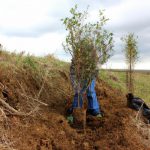
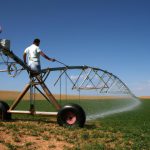
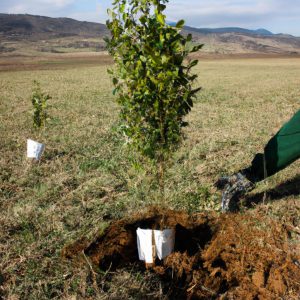
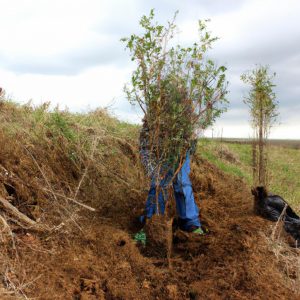
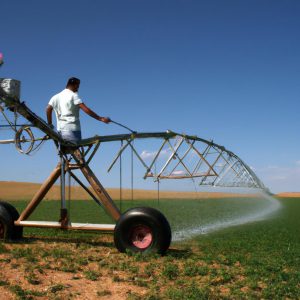
More Stories
Organic Farming Practices in Agriculture and Forestry: Green Loans
Sustainable Farming Techniques: Agriculture, Forestry, and Green Loans
Agroforestry practices: Agriculture and Forestry: Green Loans